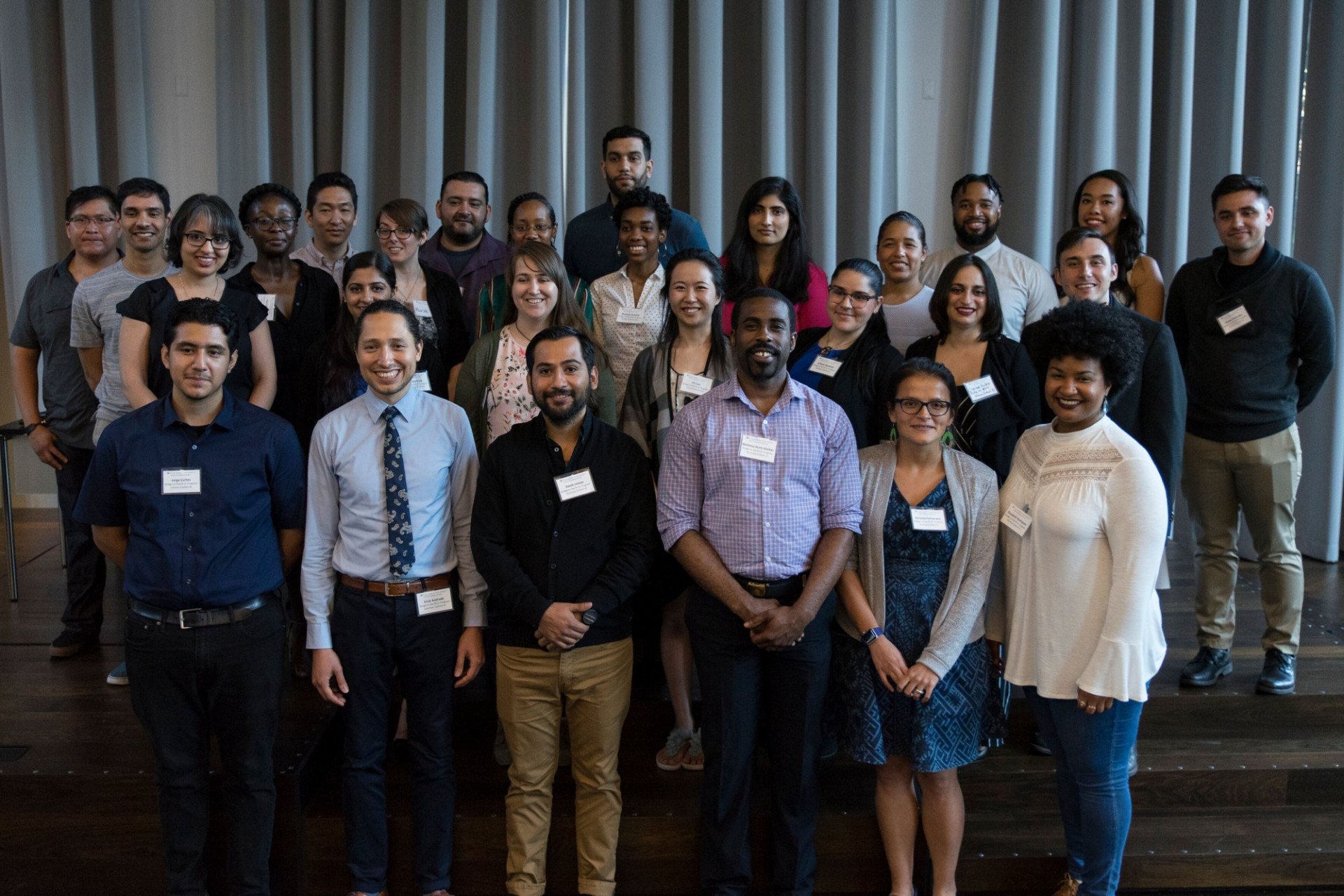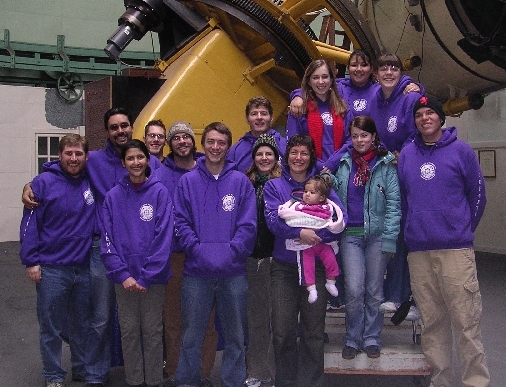I am dedicated to bringing about systemic changes that will address the historic underrepresentation of women and minorities in astronomy and in science in general. The difficulty for anyone concerned by issues of underrepresentation is in formulating a concrete, feasible plan. As a graduate student, I helped write such a plan and worked to implement some of its recommendations; as a post-doc, I was the Associate Director of a Columbia program to assist underrepresented post-baccalaureates prepare for the transition into Ph.D. programs in the sciences. I believe the lessons I have learned along the way about how best to recruit and retain students into science will benefit all of my students.
I was elected to the Board of Trustees of the American Astronomical Society (AAS) in 2017, and shortly thereafter was asked to join a new task force on Diversity and Inclusion in Graduate Astronomy Education. With my friend and mentor Keivan Stassun, I co-chaired the working group on admissions; the task force's final report was endorsed by the AAS Board (I abstained from the vote!) ahead of its meeting in Seattle in January 2019.
One of the task force's leaders, Alex Rudolph, wrote a commentary on the report that is also a nice summary of how we hope it will be used. Reactions have been very positive; Kendall Powell wrote a nice piece for Nature discussing the reasons for convening the task force and the recommendations.

In the summer of 2008, I was hired as the Associate Director of the Bridge to Ph.D. Program in the Natural Sciences, a new program housed in Columbia's Office of the Vice-Provost for Diversity. The Bridge Program prepares underrepresented students for the transition to graduate school by offering college graduates the opportunity to work as research assistants while undertaking coursework and other activities required for admission to a Ph.D. program. As Associate Director, I oversaw the research progress of 14 post-baccalaureates, was involved in the recruitment of future cohorts, and helped plan for the long-term structure and funding of the program. In 2010, when I started on the faculty at Columbia, I became the Bridge Program director.
A decade on, we have a full-time director for the Bridge Program, which is now known as the Bridge to the Ph.D. Program in STEM, Dr. Kwame Osei-Sarfo. As founding director, I now lead the faculty advisory council that tries to provide useful guidance to Kwame...!
Back in 2012, the Columbia Record had an article about the Program. In 2014, I was interviewed for an article about the Fisk-Vanderbilt Master's-to-Ph.D. Bridge Program that appeared on NPR's website. And in 2015, I was interviewed by the Columbia Spectator about Columbia's efforts to diversify its faculty.

In 2002-03, with my fellow grad students Kevin Covey and Andrew West, I researched and wrote To Feed, To Fix: Diversity and the Astronomy Pipeline at the University of Washington (UW). In writing To Feed, To Fix, we had two goals: "...to increase the effectiveness of our outreach at the K-12 level, and in particular to influence students who may never have considered a career in astronomy" and "to identify the resources required to recruit and retain talented women and minority astronomy students at the undergraduate and graduate levels." While this plan was written in Seattle, many of the programs and resources we identified are national or have equivalents on campuses across the country; the strategies we identified for interacting with these programs and taking advantage of these resources are not UW-specific.

One of the ways we sought to achieve our goals was through the Pre-Major in Astronomy Program (Pre-MAP). Kevin and I wrote the proposal to the UW's President's Diversity Appraisal Implementation Fund to create Pre-MAP, which started in the fall of 2005. Pre-MAP is for incoming first-year students with an interest in science and mathematics who are from groups that are historically underrepresented in astronomy. Participating students learn astronomical research techniques in a seminar taught by a graduate student and apply these techniques to research projects designed by members of the department. Pre-MAP students also receive mentoring from the graduate student throughout their first year at the university. Pre-MAP recently celebrated its 10th birthday, and there was a special session at the Seattle AAS meeting in January 2015 in its honor.

Another focus of our efforts over the years has been to increase the presence of astronomers at annual meetings of minority professional societies, in particular that of the National Society of Black Physicists and of the National Society of Hispanic Physicists, held jointly in February. As this article attests, this effort was very successful at providing a forum for meeting students who do not typically get a chance to interact with astronomers. I have been thinking about how to expand these efforts, and back in 2009 helped organize a workshop at the annual Society of Hispanic Professional Engineers conference to introduce that audience to opportunities at the National Optical Astronomy Observatory.



